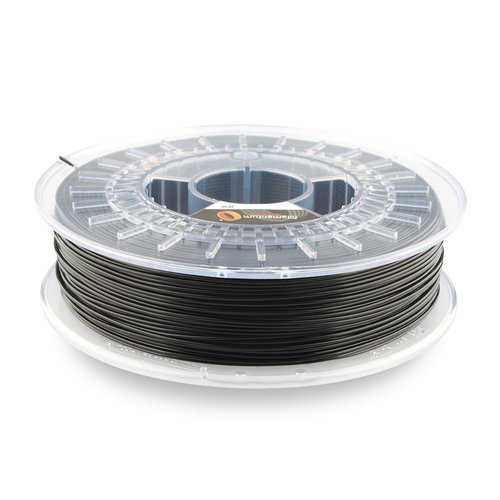Fillamentum
PETG Black, 1 KG filament
€31,75
PETG is strong, has ease of printing and excellent mechanical properties; PETG is therefore an ideal filament for functional applications.
Availability:
Out of stock
PETG is one of the most widely used 3D filaments due to its ease of printing and excellent mechanical properties.
PETG is the abbreviation for polyethyleneterephthalate glycol: this filament is hard, strong and has very good bending and chemical resistance.
For example, PETG is an excellent alternative 3D filament if the temperature resistance of PLA is not sufficient and you want the uncomfortable printing properties of ABS. PETG has combined the best of PLA and ABS in one 3D printing material.
Printing with PETG:
- Print temperature: 235 - 255 ° C
- Bed temperature: 65 - 75 ° C
- Fan: 0 - 30%> when cooling too quickly PETG becomes brittle
- Diameter: 1.75 mm
- Weight: 1,000 grams per coil
- Diameter tolerance: 0.05 mm
- Length: 325 meters (1.75 mm)
- * Pre-dry for 3-4 hours at 65 ° C
- * Use a good bed adhesion, such as Magigoo PA, 3DLAC or Lockpad > this is to protect the top surface of your printbed; PETG attaches too good and can destroy your surface when you remove you 3Dprint
- * PETG absorbs moisture quickly; store in an airless, resealable bag in a dry place
Advantages of PETG:
- Hard and strong
- Chemical resistance
- Very good bending resistance
- Temperature resistance up to 70 ° C
- Hardly any warping and shrinkage
- Excellent layer adhesion
- Suitable for food-safe applications in the EU and USA
- Suitable for electrical applications
- Hardly any fumes
- Recyclable, BPA free, hardly fumes
Applications:
PETG can be used to print:
- Functional parts for, for example, 3D printers
- Food storage and packaging for food and drink food and drink
- Electronic devices
No reviews found...



























